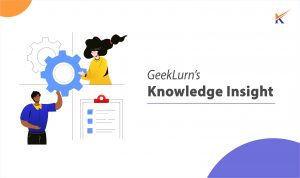AGILE GETS YOU MORE MILE, Do you believe in it?
Last Updated on: July 21, 2022
Table of Contents
What is Agile Product Management?
Agile product management does exactly what its name suggests. It helps shorten timelines and enhance productivity through agile decision making. It empowers businesses to respond quickly to changing market conditions and rapidly adopt new technologies via an adaptive approach to product planning and execution. It enables the creation of product strategies and roadmaps in an agile environment. This helps companies offer customers exactly what they want, when they want it.
The pervasive use of agile software development methodologies, such as Kanban and scrum, gave rise to agile product management. Agile values prioritise individuals and interactions over processes and tools, software over elaborate documentation, customer collaboration over contract negotiation and responding to change over following a rigid plan.

Benefits of Product Management in Agile
Agile has revolutionised the way product managers plan and develop products. Traditionally, new customer experiences are strategised, designed, executed and tested in a step-by-step manner. This means that any new feature or functionality of a product will be delivered sequentially. As a result, changes are difficult to implement once requirements have been determined and handed over to the development team.
The traditional method tends to lead to the failure of lengthy or large-scale software development projects more frequently than businesses would like. This led to the demand for a more flexible approach that could allow teams to adapt to changing customer needs and feedback.
The agile product management framework provides just the type of flexibility that benefits the planning and development of software. With the agile approach, product managers can take an evolutionary approach, with short-term goals, for greater control over each project and ease of adjusting the plan at any point in the process.
Some of the major benefits of agile product management are:
- Fulfilling customer needs through easy adjustments to the short-term roadmap.
- Opportunities to improve through customer feedback through the product’s lifecycle.
- Ability to incrementally add value for customers.
- Ease of responding rapidly to changing or new requirements.
- Collaboration between team for quicker and smoother project delivery.
NASSCOM-partner GeekLurn offers an Agile Product Manager & Product Owner course. The course offers interactive live sessions, flexible self-placing, experienced corporate trainers and real-time industrial teaching. The framework includes 120+ hours of live sessions, periodical mock tests and one-to-one performance assessments. The job opportunities that open up with this course include positions of agile product owner, specialist product owner and senior agile product manager.
Misconceptions of Agile Product Management
Despite the huge popularity garnered by the agile product management framework, various misconceptions are still doing the rounds. Here’s a look at some of the most common misconceptions:
- Agile is ad hoc, without any planning: Firstly, adopting the agile approach does not equate to a lack of process. It is actually based on a variety of formal methods and processes that determine how to manage projects, the work processes within the process and how to be responsive to customers. All agile does is breakdown lengthy processes into incremental steps, such that the steps can easily be modified without disrupting the entire plan.
- Agile only works for small businesses: On the contrary, agile can be a good fit for any size of team, project or organisation. In fact, large businesses and complex project can be excellent candidates for agile product management, with giants like IBM, Philips and GE, using it. It can be a good way to drive innovation and revolutionise existing processes at an enterprise level.
- Agile is only meant for software development: Well, that might have been where the methodology was born but it has grown over time to become useful for physical product development as well. For instance, Cisco Systems built its Subscription Billing Platform (SBP) using agile development. Fitbit was among the early adopters of agile, using Scrum to fulfil its holiday product delivery schedule for Christmas 2007.
- Agile equals Scrum: Scrum is one of the agile methodologies, not the only one. It emerged from the use of eXtreme and Lean Programming.
- Agile eliminates the need for documentation: The reality is that there is ample opportunity for documentation within the agile approach. In fact, given its on-demand or just-in-time focus on product development with dynamic team membership, planning and documenting can become even more important than in the traditional approach.
- Agile developers can do what they want: No project can be successful without clearly defined roles and responsibilities. This is true for agile projects as well. The difference is that there is less of a “command-and-control” management style, with roles being determined in a collaborative way.
- Agile isn’t suitable for projects with fixed deadlines: The reality is quite the opposite – agile projects work best with hard deadlines without sacrificing the responsive or reactive nature of the methodology.
- Agile compromises on quality for speed: The agile product management framework does not make the process meaningfully faster than the traditional approach. It only makes it more responsive to changing or new requirements, maximising the chances of project success. Quality controls, such as beta testing, QA, etc., can be applied throughout the process.
Agile projects are never-ending: The entire premise of using agile is to be able to add value for the customer throughout the product life cycle. So, agile teams could continue to work on upgrades, new releases and other aspects that could lead to the business achieving value that is greater than the cost. When the returns begin to diminish, the project should ideally end.





